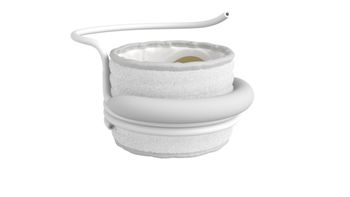
Your patients’ browsing habits may be driving their negative moods
Key Takeaways
- Negative online content consumption exacerbates poor mental health, creating a self-perpetuating feedback loop.
- A browser plug-in was developed to label content, helping users make healthier online choices.
Poor mental health can be driven by online browsing choices - but a free tool can help
A study led by University College London researchers found a bi-directional relationship between mental health and online browsing habits. Published in
The researchers also unveiled a browser plug-in designed to combat this cycle by helping users make healthier choices about the content they consume.
The study analyzed the web browsing habits of over 1,000 participants, correlating their mental health self-assessments with the emotional tone of the websites they visited. Using natural language processing, the team found that individuals experiencing worse moods or mental health symptoms tended to gravitate toward negatively valenced online content. Post-browsing, their mood often declined further.
To establish causality, researchers conducted an experimental study where participants were exposed to either negative or neutral content. Those viewing negative websites reported worsened moods and subsequently sought out more negative content during unrestricted browsing, demonstrating a self-perpetuating cycle.
“Our results show that browsing negatively valenced content not only mirrors a person’s mood but can also actively worsen it,” said Tali Sharot, co-lead author from UCL Psychology & Language Sciences and affiliated institutions, in a statement. “This creates a feedback loop that can perpetuate mental health challenges over time.”
To counteract these effects, the researchers developed a browser plug-in that applies “content labels” to webpages. Similar to nutrition labels on food, these labels inform users about the emotional impact, practicality, and informativeness of the content.
In one experiment, participants used a version of Google Search that displayed mood-related labels alongside search results. They were more likely to click on sites labeled as mood-improving, and afterward, reported better moods compared to participants who did not use the labeled results.
“We are accustomed to seeing content labels on our groceries, providing nutritional information to help us make informed decisions about what we eat. A similar approach could empower people to make healthier choices online,” Sharot said.
Co-lead author Christopher Kelly noted that this study moves beyond focusing on the quantity of internet use, such as screen time, to examining the quality of content consumed.
“This approach provides new insights into how online behavior influences mental health,” Kelly said in a statement. “It also suggests actionable interventions, like content labels, to help people make better decisions about what they view online.”
The plug-in tool is currently
For physicians, especially those treating patients with
Newsletter
Stay informed and empowered with Medical Economics enewsletter, delivering expert insights, financial strategies, practice management tips and technology trends — tailored for today’s physicians.








